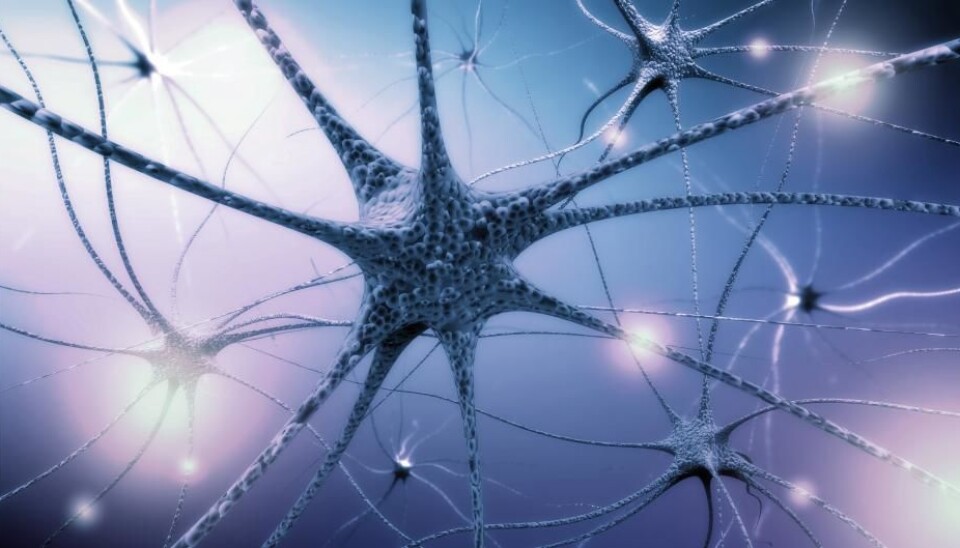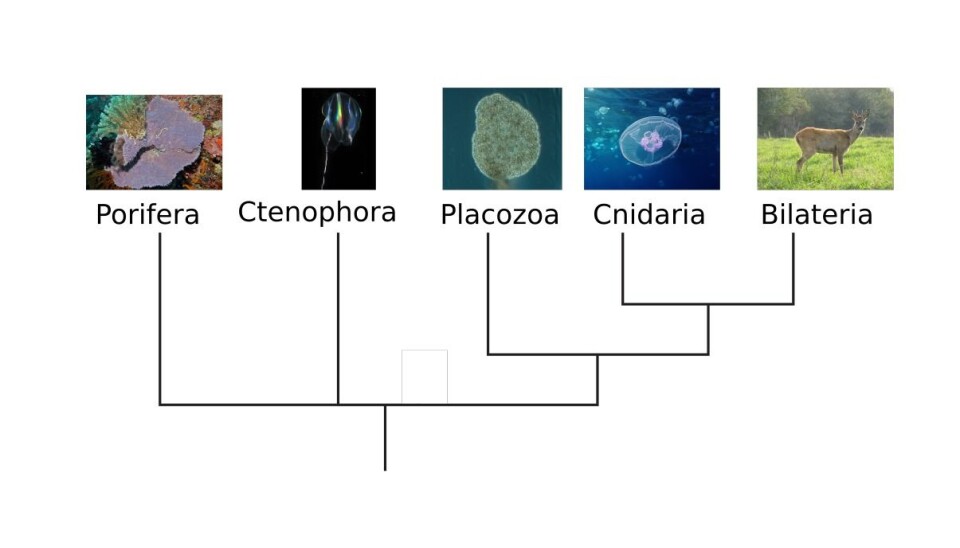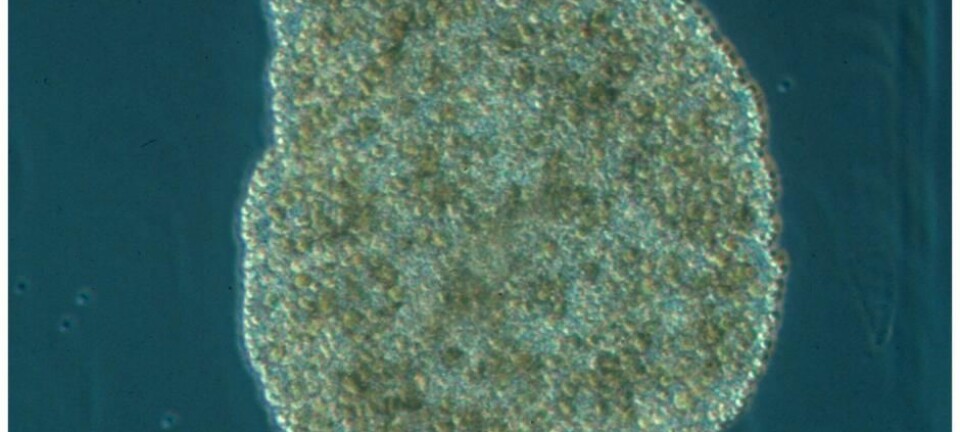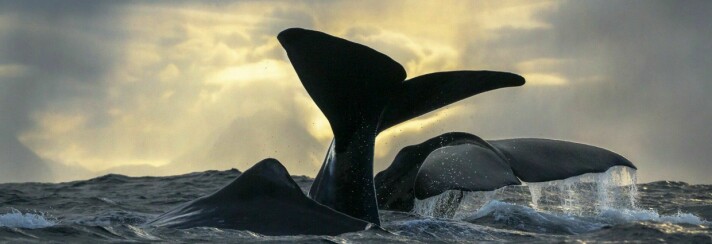Researchers' Zone:

Evolutionary mystery divides scientists: Did the nervous system evolve twice?
A number of new studies suggest that the evolutionary history of the nervous system is not as straightforward as previously thought.
The emergence of the nervous system is one of the important events in the evolutionary history of animals, and, with the exception of very few organisms, all living animals possess a nervous system.
The large distribution of nerve cells in the animal kingdom means that possessing a nervous system must have been a huge evolutionary advantage.
The nervous system is essential to our interaction with the outside world, and its development made it possible to integrate senses and movements in a precise and faster way.
This could then form the basis of more complex behaviour.
'Impossible' for the nervous system to have evolved twice
When you examine the structure of, for example, our own nervous system, it possesses an incredible complexity. So many elements interact at all levels from the entire organism to organs, cells and proteins that it is easy to get lost in the details.
Because the complexity of the nervous system is so high, biologists have always thought that all animals with a nervous system must have descended from a common ancestor.
That something so complex could have evolved several times, independently of each other, seemed completely impossible... until very recently.
Indeed, new findings suggest that the evolutionary history of the nervous system is much more complex than previously thought (see here, here and here).
In order to understand these results, one needs to look at the most basal animals (see the fact-box for an explanation of 'basal').
What does it mean to be basal?
Strictly speaking, it is incorrect to call some living animals basal. All living animals have an equally long evolutionary history.
We humans tend to see ourselves as the pinnacle of a hierarchy in evolution, which is not correct. No animal is more 'advanced' than others – each has adapted to their environment.
However, there is no good name for the four groups of animals that split away before the origin of the bilateral animals (animals that can be 'mirrored' in the middle and have more or less identical left and right sides).
I therefore use both 'basal' and 'early' animals to cover Porifera, Placozoa, Ctenophora and Cnidaria.
Where do animals come from?
Virtually every animal we know has a so-called bilateral symmetry – that is, they can be mirrored in the middle. For example, we have a right and left side that are identical. All these animals (called Bilateria) have a common ancestor that lived around 700 million years ago when bilateral symmetry originated.
However, there are a few animal groups that occurred before this. These early animal groups are: Porifera, Ctenophora, Placozoa and Cnidaria.
Our common evolution with these animals is therefore shorter than with other Bilateria. However, we still share a large number of common features with them due to sharing a common ancestor.
Exactly when these animal groups split off in evolution is interesting as it can tell us a lot about our own evolutionary history – among other things, when the first nervous system evolved.
The early divergent animals
Until recently, biologists believed that Porifera were the first group to split off. Porifera, which are living sponges, have nothing to do with what we call sponges in everyday life.
They belong, rather, to the animal kingdom. Porifera are stationary and live off the organism particles and plankton that they filter from the water, and they do not have a nervous system.

Placozoa form a remarkable animal group with only two described species. The animals consist of basically two cell layers of just a few millimetres in diameter. They do not have a nervous system, but they are nevertheless able to perform relatively complex behaviours – such as searching for algae to digest.
Cnidaria is a common name for jellyfish, sea anemones and corals, among others. Although they are simple animals, they are the closest animal group to the bilateral animals, and they have, not least, a nervous system.
It was long thought that Ctenophora and Cnidaria formed one common group because of their similar jelly-like appearance. On closer inspection, however, it could be seen that both their cells and genetic material did not look alike, and they were then separated into two groups of animals.
Ctenophora can be recognised from ordinary jellyfish by how they move, among other factors. Ctenophora have rows of tiny ‘hairs’ on their exterior to help them move. They also possess, like the Cnidaria, a nervous system.
Did Porifera develop first?
Based on physical features (including the presence of a nervous system, but also the digestive system and other traits), it was thought that the splitting of animal groups from what later became the bilateral animals came about in the following order: Porifera, Placozoa, Ctenophora and Cnidaria.
This makes perfect sense since the nervous system probably evolved once between Placozoa and Ctenophora.
But, as you no doubt know, biology does not always fit in with our ideas.
Or was it Ctenophora?
Today, computers are used to analyse genomes from living animals in an attempt to establish their developmental history. By comparing genetic sequences, one can calculate the most likely development and make some suggestions as to which animals evolved first.
Over the past decade, there has been an explosion in the amount of genetic data that has been sequenced, and this has allowed us researchers to use this method to investigate the order in which the earliest animals evolved.
For some time, various analyses showed that it was the Porifera (which do not have a nervous system) that evolved first, as had been expected from previous theories.
It was therefore very surprising when more and more new analyses began to suggest that it was perhaps the Ctenophora (which has a nervous system) that was the first animal group to split away.
Why is this so surprising? Because the evolutionary history of the nervous system suddenly turns out to be more complicated than previously thought.
We still have no definitive answer as to how the first nervous system evolved, and there is therefore a great deal of debate between researchers about the interpretation of the results.
These interpretations can be roughly divided into three different hypotheses.
Hypothesis 1: The results are wrong
Some researchers are very sceptical about the results that show Ctenophora as the first to split away in evolution. Why?
The answer is that there are some uncertainties in the analyses, while the immediate results lead to some unlikely conclusions.
Namely, either:
- The nervous system evolved twice, or
- The nervous system developed once very early in evolution but was then lost in both Porifera and in Placozoa (we will return later as to why these conclusions are unlikely).
Phylogenetic analyses may vary somewhat in their results depending on, among other things, the animals included, the amount of data, the choice of model etc. This is not made any easier by the fact that it is investigating very early evolutionary history of over 700 million years ago.
Finally, other groups of researchers continue to find in their analyses that Porifera evolved first.
Hypothesis 2: The nervous system evolved twice
Some researchers, on the other hand, believe that the nervous system evolved twice, independently of each other: once in the ancestor of existing Ctenophora and a second time in the common ancestor of Cnidaria and bilateral animals.
It is a bold hypothesis since the nervous system is a very complex network. This would be an extreme example of what biologists call convergent evolution.
Convergent evolution is when a trait develops independently in two animal groups. We know that convergent evolution sometimes takes place – for example, both eyes and wings have evolved several times.
Proponents of the convergent evolution hypothesis argue that a double loss of nervous system in both Porifera and Placozoa is highly unlikely.
In addition, the nervous system in Ctenophora is very different from other animals.
For example, many of the neurotransmitters used by other animals do not appear to be present in Ctenophora. The same applies to a number of proteins that are usually considered essential in the nervous system. This strengthens the convergent evolution hypothesis.
However, many are also sceptical towards this hypothesis.
Although the nervous system of Ctenophora is remarkable, it still resembles other nervous systems in many ways. For example, Ctenophora use the neurotransmitter glutamate to a large extent, which is the most common neurotransmitter in many other animals.
Hypothesis 3: The nervous system was lost in Placozoa and Porifera
If, on the other hand, the nervous system evolved once in the common ancestor of all animals, it must have been lost in both Porifera and in Placozoa.
The almost universal presence of the nervous system in the animal kingdom suggests that possessing it provides a huge evolutionary advantage. Some researchers therefore believe that such a double loss of the nervous system is highly unlikely.
If Porifera have lost the nervous system, it must probably have been beneficial for them in terms of coping without it. But what benefits could there be in not having a nervous system?
Firstly, the nervous system could be a physical hindrance for both Porifera and Placozoa.
Porifera feed by filtering water in a system of cavities. A nerve network might reduce this flow of water.
Placozoa, on the other hand, are incredibly plastic in their structure, and a fixed, anchored nerve network might reduce their ability to change shape.
Another possibility is that it simply takes a lot of energy to have a nervous system. For example, it is estimated that our brain (which contains billions of nerve cells) uses 20 percent of our total energy, even though it only accounts for about 2 percent of our body weight.
Perhaps the price of having a nervous system was too high for Porifera and Placozoa. For them, there was not much extra to gain in having a nervous system, as they can easily cope without it.
Nature is not obliged to make sense
As mentioned above, it remains uncertain how the nervous system evolved.
There are many possibilities, and one can only hope that higher data quality and analysis will eventually lead us researchers towards a greater degree of consensus.
In the meantime, therefore, it is a good idea to consider all hypotheses and be open to even highly unintuitive possibilities – such as the possibility that the importance of the nervous system might be greatly overestimated.
Translated by Stuart Pethick, e-sp.dk translation services. Read the Danish version at Videnskab.dk's Forskerzonen.
References:
Thomas Lund Koch's profile (KU)
'Early evolution of the bilateria'. Systematic Biology (2000). DOI: 10.1080/10635150050207438
———







